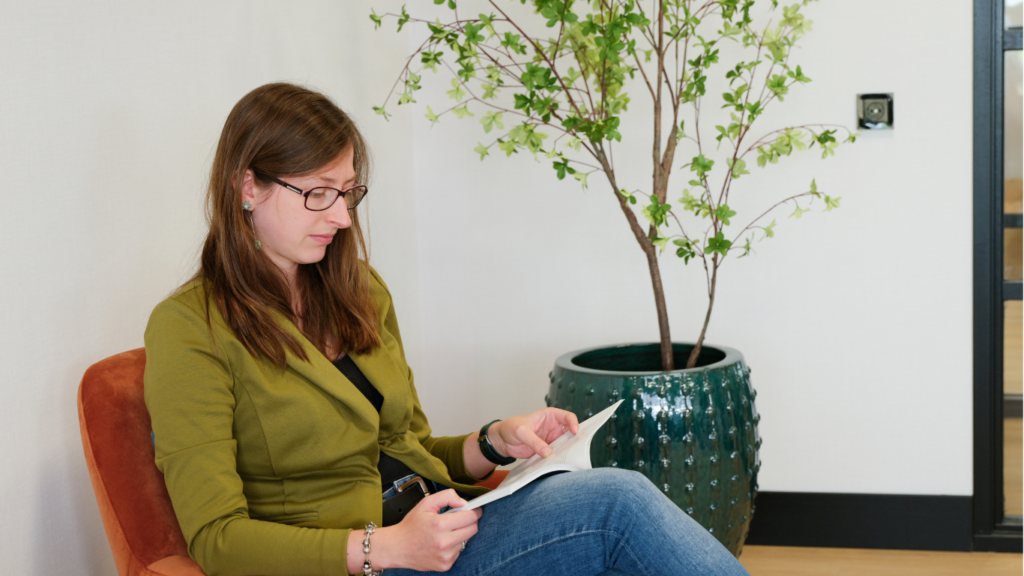During the information afternoon in Zwolle, on December 9, 2023, our Scientific Officer Annet gave a presentation on gene therapy. We also asked you about your thoughts on gene therapy. We then shared the survey on social media and in our newsletter, resulting in a whopping 50 responses! We are very grateful for this. We are happy to share the results with you so you can see what we are doing with your input.
First, we were struck by how positively people are thinking about gene therapy. 95.9% of you answered the question: how do you feel about gene therapy? as positive. We’re glad to see that, because it’s a much more positive response than we expected. 75% of you also answered a resounding yes when asked if you are open to participating in gene therapy. 19% of you doubted this and 6% clearly indicated that it was a no.
We think it is important that you can make an informed decision in this. Therefore, in the coming months we are going to make available even more understandable information so that you can make a good choice. We also asked you about concerns for gene therapy. There certainly were. There were 5 themes that came up several times:
- The misuse of materials and data;
- The side effects of gene therapy;
- Ethical justification regarding DNA modification;
- How religion faces this;
- The affordability of gene therapy.
Nearly 80% of you expressed interest in an information packet on gene therapy. When asked in what form you would prefer to receive this, it came out that most and prefer to receive a text as well. In second place was viewing pictures or videos.
When asked what your expectations are of gene therapy, the most common was to solve the disease. An inhibition of the disease in people who already have symptoms was also mentioned. The last question allowed for comments or questions, some of which we have answered below:
What about DWORF?
DWORF is a small protein in heart muscle cells. The function of this protein is opposite to PLN. There has been a study that has shown that more of this protein can slow but not stop the disease. It is difficult to translate this as a treatment to humans because it is difficult to deliver.
That’s because the heart is often hard to reach because the liver and kidneys do a good job of filtering weird stuff out of the blood. The protein in cells has a function. This means that it has yet to enter the cell, and that doesn’t just happen. Most biologicals have a role in the blood, so they can be injected “just like that,” but this is not an option for DWORF. Want to read more about DWORF? Then click here.
In what time frame can we initiate therapy?
It’s hard to say. For now, the CRISPR-Cas technology is in the experimental phase. There is indeed a CRISPR-Cas therapy against an inherited swelling disease. This is very hopeful! However, CRISPR-Cas works against a specific gene. Therefore, a new variant should be made for PLN. Then that will also have to go through the mill where all new therapies have to go through before it is clinically available.
In addition to modifying the gene, gene therapy can also refer to expressing other genes in the cell (as explained in the presentation). An initial clinical trial of a therapy of this caliber will begin next year. However, this is for heart failure in general, not PLN heart disease.
Can gene therapy be used at all stages of disease?
Exactly how we apply the therapy is yet to be determined. Giving preventive gene therapy is not ethically justifiable, and besides, damage already done cannot be reversed. We envision that carriers of the gene will be monitored very closely for developing the disease and receive therapy as soon as possible should heart failure develop.
How long or how often should the treatment be given?
A gene therapy that actually addresses the flaw in the PLN gene should be administered only once.
Is artificial intelligence (AI) being looked at in relation to PLN?
AI is already being used in the clinic to help determine if someone needs an ICD. In addition, it is possible to use AI to assess ECGs and thus possibly signal the moment a person may be a carrier of the gene. We would like to set up such a system nationwide, although this is still at a very early stage.
